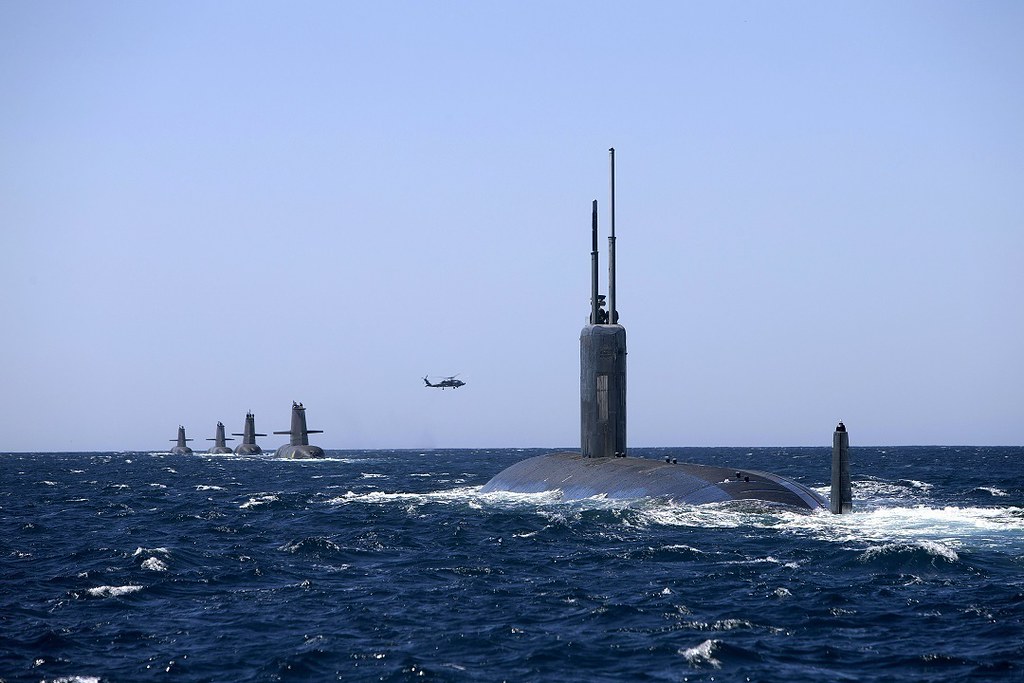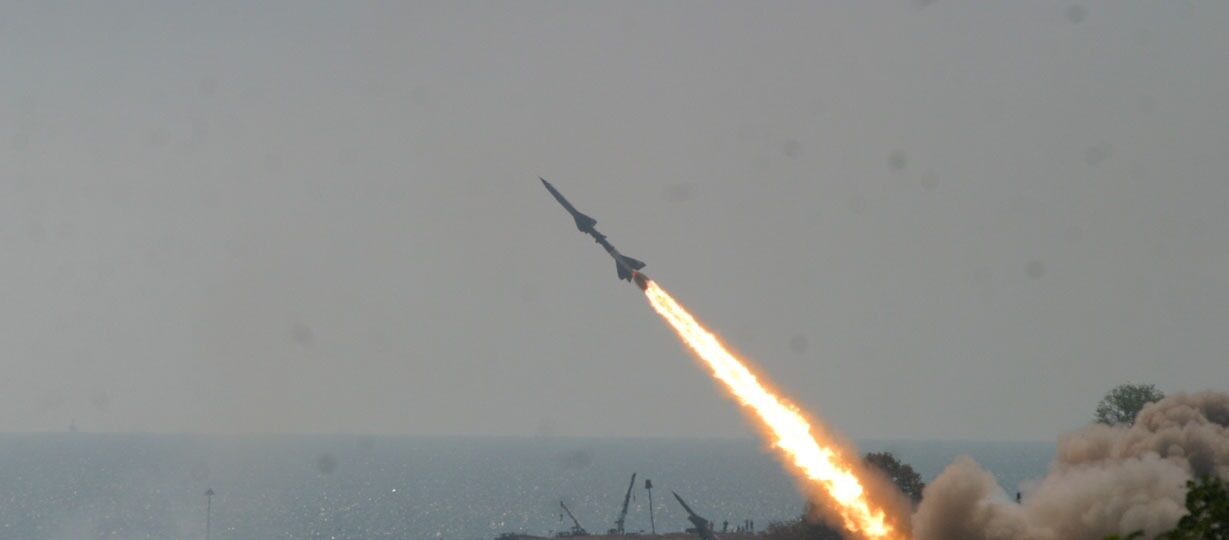Book Review: Ukraine’s Nuclear Disarmament: A History
APLN Senior Associate Fellow John Tilemann reviews “Ukraine’s Nuclear Disarmament: A History” by Yuri Kostenko, former minister for environment. The article was originally published on Australian Institute of International Affairs (AIIA) on 20 September 2021 and can be viewed here. This article is published under a Creative Commons Licence and may be republished with attribution.
The context of Ukraine’s nuclear disarmament is the collapse of the Soviet Union and the end of the cold war. Yuri Kostenko provides a firsthand account of the process.
In retrospect, the1990s were the golden age of nuclear arms control. The first Strategic Arms Reduction Treaty (START), agreed in 1991, resulted in massive reductions in US and Russian nuclear arsenals. In 1992, China then France acceded to the Nuclear Non-Proliferation Treaty (NPT), bringing all five “recognised” nuclear weapon states into the non-proliferation regime.
South Africa joined the NPT in 1991, though in 1993 revealed that it had built six nuclear “devices” but had dismantled and destroyed them before joining. In 1994, Brazil followed Argentina in joining the Treaty of Tlatelolco, a nuclear-weapon-free-zone accord covering Latin America and the Caribbean, and subsequently both joined the NPT.
Iraq was being disarmed by the United Nations Special Commission (UNSCOM) and the International Atomic Energy Agency (IAEA). And in response to North Korea’s intent to withdraw from the NPT, the United States and North Korea signed in 1994 the “Agreed Framework” committing North Korea to wind back its nuclear program in exchange for the construction of two nuclear power plants.
Three former republics of the Soviet Union, Belarus, Kazakhstan, and finally Ukraine, gave up their nuclear weapons and joined the NPT as non-nuclear weapon states. In 1995, the NPT Review and Extension Conference extended the life of the NPT indefinitely.
But none of these developments was uncontested at the time. In the case of the North Korean agreement, it ended in failure. Others may harbour regrets – at having acquiesced in the indefinite extension of the NPT, even of having given up the nuclear option.
Yuri Kostenko’s account of Ukraine’s denuclearisation is a richly detailed case study drawing on his own engagement as a minister for environment, but more importantly as a leading member of the Ukraine parliament. The study problematises Ukraine’s nuclear disarmament decisions and offers unique insights into international negotiations and diplomatic practices.
Kostenko describes the underlying political and policy forces at work during the collapse of the Soviet Union and the efforts at that time to define the needs of an emerging sovereign state which lacks the fundamentals of statehood. The immediate point of departure is the stash of nuclear arms which Ukraine inherited with the dissolution of the Soviet Union in 1991- probably over 4,000 warheads, 176 intercontinental ballistic missiles (with multiple warheads), and about 40 heavy bombers. Kostenko explains the difficulty in pinpointing the numbers of weapons, as well as the quantities of plutonium and highly enriched uranium they contained.
At the heart of the story is the rolling domestic political crisis of the newly independent state of Ukraine. The country juggled internal differences while seeking to navigate the pressures of Moscow and Washington. Ukraine’s leadership was initially dominated by the executive arm headed by the president comprised largely of officials with ongoing strong ties to Moscow. Kostenko points out that in the early months after independence, the Ukraine phone and eavesdropping system was Russian controlled, and its intelligence and foreign services were still closely enmeshed with their former Moscow bosses. He is particularly critical of the Foreign Ministry for its lack of independent judgement.
Moscow demanded the removal to Russia of all nuclear weapons and strategic missiles, arguing that Ukraine’s security and economic interest were best served in giving up their nuclear weapons quickly and joining the NPT – views generally backed up by Washington. Those in Kiev who accepted this line also noted that if Ukraine failed to surrender the weapons, Moscow would most probably remove them by force. In addition, Ukraine was at the mercy of Russian energy and other supplies.
Ukraine’s parliament however had other, more nationalist elements, including our author who argued that the nuclear weapons and their delivery systems could be used to extract better security and economic outcomes for Ukraine. He refers to this as the “effective disarmament” strategy.
The book explores how Ukrainians sought to define their national security needs. If Ukraine was to forego nuclear weapons, how would it defend itself?
The country was and is deeply divided over whether Russia is a natural friend or foe. There were some in Ukraine who wanted to keep the nuclear weapons and find ways to take control of them from Moscow. Kostenko says he recognised that a nuclear armed Ukraine was a step too far – Washington was adamantly opposed, and in the wider US policy community, only the international relations realist theorist John Mearsheimer had argued the case for a nuclear armed Ukraine.
Kostenko argues that while there was an acknowledged commitment by Ukraine to eventually join the NPT as a non-nuclear weapon state, its share of the Soviet nuclear arsenal was a potentially powerful bargaining chip which was traded away far too cheaply. Kostenko also aspired to use the inherited stock of missiles for non-nuclear precision guided missiles. This was not to be – the missiles were dismantled and silos demolished. Another source of security could have been deep engagement with the West – ultimately NATO. That quest has been a continuing source of domestic debate and of friction with Moscow.
As these security options receded, Kostenko’s faction sought enhanced, legally binding security guarantees from the nuclear powers. The search for such guarantees led to the 1994 Budapest summit where Ukraine finally acceded to the NPT and in return was offered assurances by Russia, US, UK, and later China and France in the form of the “Budapest Memorandum” – which “reaffirms” preexisting assurances and adds that the three nuclear powers will “consult in the event a situation arises that raises a question concerning these commitments” (emphasis added). Kostenko understandably asks how these undertakings helped Ukraine in face of the 2014 Russian backed “incursions” and subsequent occupation of Ukrainian territory. There are lessons here for what the international community will need to do to resolve today’s proliferation challenges, North Korea and Iran.
Another focus of this study is the economic aspects of disarmament. Who was to pay for the dismantling of weapons and delivery systems, and what value would be accorded the released nuclear materials? Kostenko argues that Ukraine was unfairly treated on both accounts. He is especially critical of the failure of Ukraine to obtain compensation for the plutonium. Ukraine did receive some of its uranium back in the form of down blended fuel for its large fleet of nuclear power plants.
A fascinating side story is the beguiling offers by US private interests to help Ukraine exploit its plutonium and uranium holdings, either by helping Ukraine produce its own fuel and thereby escaping dependency on Russia (General Atomics); or by use of facilities in the US (the Isaiah Project). If ever there was official US support for such arrangements, it quickly dissipated given US concern to secure close partnership with Russia in the management of the denuclearisation process.
“Loose nukes” were not an unreasonable concern given the chaos of the Soviet collapse, and small quantities of nuclear materials had been recovered from nuclear trafficking attempts. The US effort to help manage these issues, primarily the highly innovative Nunn-Lugar Act, contributed greatly to securing nuclear materials in the former Soviet Union – but Kostenko argues that payments to Ukraine were grossly inadequate given the values of the materials it had given up.
The book includes copious helpful notes and key documents. It has a useful introductory essay by Paul D’Anieri, an American international relations scholar who has focused on US-Ukraine relations. The layout of the book is attractive with biographical notes on the key actors.
There is some repetition, and at times the sequence of events becomes confused. More troubling is Kostenko’s critique of the NPT: he repeatedly asserts that the 1995 NPT extension conference was held in Paris (it was in New York) and questions the support given to the Treaty’s indefinite extension. Equally puzzling, he asserts that biological weapons are a stepping stone to nuclear weapons; and repeats incorrect information on the number of nuclear armed states as evidence of the treaty’s shortcomings.
That said, Kostenko’s study is an absorbing read, providing historical insights on the demise of the Soviet Union, the emergence of independent Ukraine, the management of its relations with Moscow and the West, and challenges and pitfalls of diplomacy from a position of weakness. It contains important lessons for the management of today’s proliferation challenges in North East Asia and the Middle East.
This is a review of Yuri Kostenko, Ukraine’s Nuclear Disarmament: A History (Harvard University Press, 2021). ISBN: 9780674249301.




